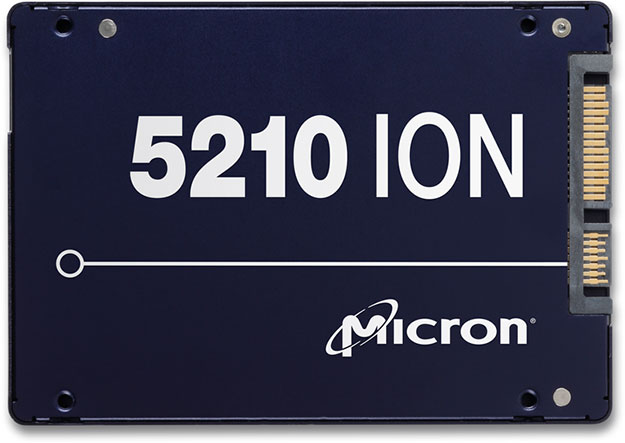Micron Launches 12Gb LPDDR4x Mobile DRAM, World's First QLC SSD In 7.68TB Capacities

Micron on Wednesday made a couple of announcements aimed at advancing the mobile memory and enterprise storage markets. Starting with the former, Micron said it has begun mass producing the industry's highest capacity monolithic memory for mobile devices and applications, and specifically 12-gigabit (Gb) low-power double data rate 4x (LPDDR4x) DRAM.
The LPDDR4x DRAM is being produced on a 10-nanometer class process technology. Micron claims the new memory is capable of reducing power by up to 10 percent at similar data rates of 4,266 megabits per second (Mbps) compared to previous generation memory. Realistically that's not going to have a big impact on a smartphone's battery life, but every little bit helps.
For consumers, the bigger benefit of Micron's new DRAM is that it doubles memory capacity without increasing the footprint compared to the previous generation solution. This paves the way for mobile device makers to cram more memory into smartphones and other mobile products, which could be important as the market pushes technologies like artificial intelligence, augmented reality, and of course 4K resolution video.

The other thing Micron announced today is the worldwide availability of its 5210 ION solid state drive for the enterprise market. This is being billed as the industry's first quad-level cell (QLC) SSD, which actually began shipping to select customers and partners in May of this year.
"Since launching the world's first QLC SSD and now making it available broadly to the market, Micron is enabling the rapid shift from slow, power-hungry HDDs to solid state drives," said Derek Dicker, Micron's corporate vice president and general manager of the Storage Business Unit. "QLC technology will become ubiquitous as today's enterprise and consumer segments start reaping the inherent advantages of SSDs over HDDs, now delivered at similar price points offered by HDDs."
Replacing HDDs outright is probably a bit optimistic on Micron's part, as the cost per gigabyte just isn't competitive. However, the reduced power draw can make up for some of the added cost, especially in data centers with hundreds and thousands of drives deployed, and of course SSDs offer better read and write performance.
"By switching to QLC SSDs from hard disk drives, our machine learning workloads complete eight times faster for TensorFlow processing, TFRecord creation, ingest and image classification," said Gautam Shah, CEO of Colfax International, a leading machine learning solution provider. "We found that a 2.3TB, 100,000 image dataset took 15.17 hours on our HDD platform while the Micron 5210 ION completed the same task in just 1.87 hours, resulting in 13 hours of savings on an everyday task. The more machine learning you do and the bigger your dataset, the more your time savings will compound."
The shortened work time is where SSDs can close the gap and surpass the cost benefit of using HDDs, though obviously that's dependent on the customer.
Micron's 5210 ION is available in capacities up to 7.68TB. These are 2.5-inch SATA drives that are rated to deliver read speeds of up to 540MB/s, along with 90,000 random read IOPS. The new drives are in mass production and available immediately to customers.

